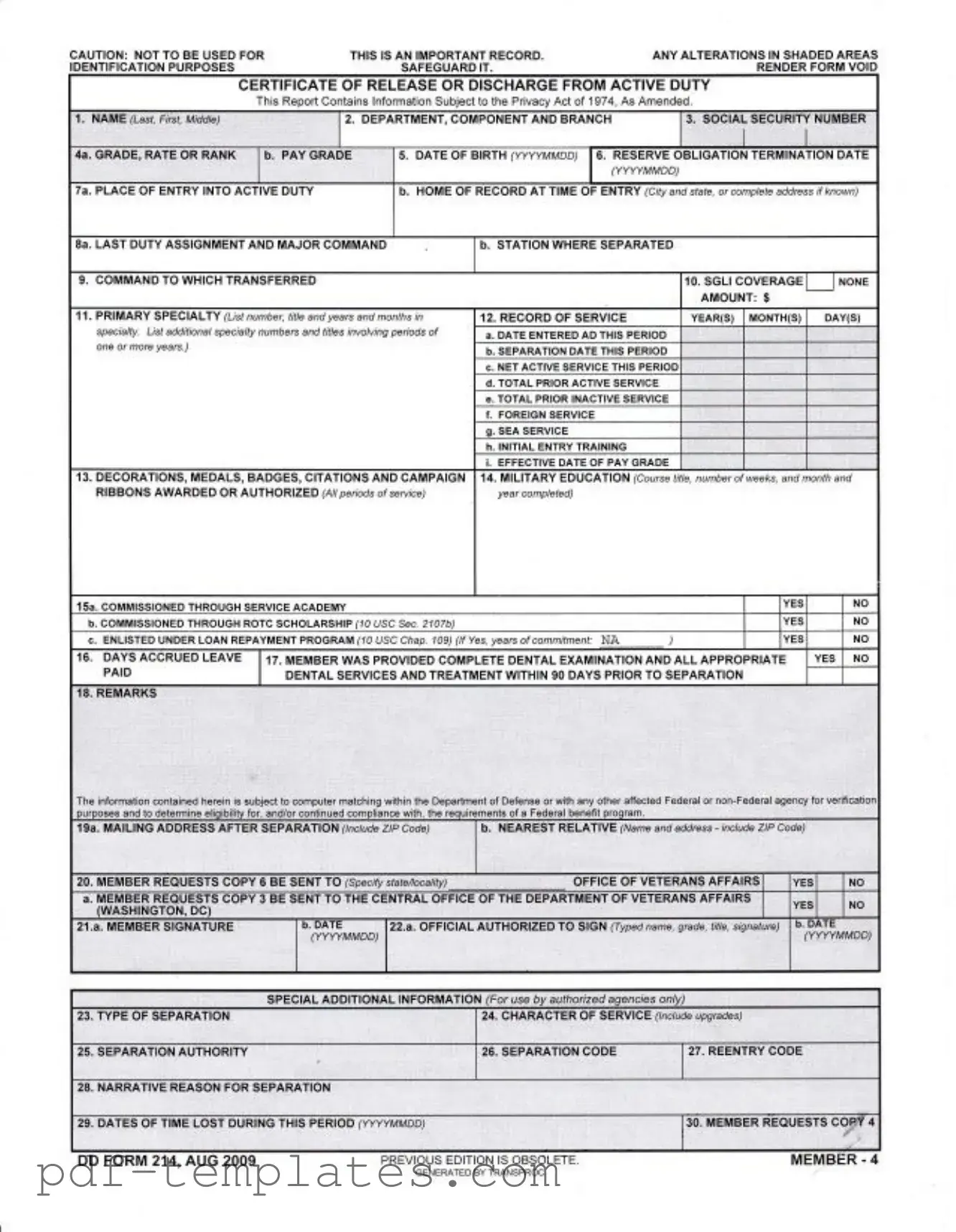The DD Form 256, known as the Certificate of Service, is a document that provides a summary of a service member's military career. Similar to the DD 214, it is issued upon separation from active duty but focuses more on the member's service record rather than the circumstances of their discharge. This form includes information about the individual's time in service, including duty stations and awards received. While the DD 214 is often used for benefits and employment verification, the DD 256 serves as a more concise record of service, useful for those who may not need the full details provided by the DD 214.
The DD Form 257, or the General Discharge Certificate, is another document that shares similarities with the DD 214. This form is specifically issued to service members who are discharged under honorable conditions but not necessarily for the same reasons as those who receive a DD 214. The DD 257 outlines the character of service and the reason for discharge, similar to how the DD 214 provides a narrative reason for separation. Both documents serve to validate a veteran's service, but the DD 257 is more focused on the discharge characterization.
The Form N-550, also known as the Certificate of Naturalization, is a document that signifies a person’s citizenship status in the United States. While it serves a different purpose than the DD 214, both documents are vital for verifying an individual’s status—military service in the case of the DD 214 and citizenship in the case of the N-550. Just as the DD 214 is often required for veterans to access benefits, the N-550 is essential for individuals seeking to prove their citizenship when applying for jobs or government services.
The Form I-9, Employment Eligibility Verification, is a crucial document for employers in the United States. It requires new hires to provide proof of identity and employment authorization. Similar to the DD 214, which can be used to establish eligibility for employment in certain federal positions, the Form I-9 ensures that individuals are legally authorized to work in the country. Both documents help streamline the verification process, although they serve different populations—veterans for the DD 214 and all new hires for the I-9.
When engaging in the sale of a boat, it is essential for both parties to understand the importance of appropriate documentation, as highlighted by the necessity of the Florida Boat Bill of Sale form. This form acts as a formal record of the vessel's ownership transfer, ensuring all necessary details are captured to protect both the seller and buyer in the transaction. For further information on how to navigate this process, you can refer to All Florida Forms, which provides comprehensive resources for both buyers and sellers in Florida.
The Social Security Administration's Form SSA-1099, also known as the Social Security Benefit Statement, is issued to individuals receiving Social Security benefits. This document provides a summary of the benefits received in a given year, much like the DD 214 summarizes a veteran's service. Both forms are essential for individuals when filing taxes or applying for other benefits, as they serve as official records of entitlement and service.
The Veterans Affairs Form 21-526EZ, Application for Disability Compensation and Related Compensation Benefits, is another document that parallels the DD 214 in its significance for veterans. This form is used to apply for disability compensation, and having a DD 214 is often a prerequisite for submission. Both documents are integral to the process of accessing benefits, with the DD 214 establishing service history and the 21-526EZ facilitating claims for compensation based on that service.
Finally, the Form DD 215, Correction to DD Form 214, serves as a means to amend or correct errors found in the original DD 214. Like the DD 214, the DD 215 is an official military document, but its purpose is to ensure that the service member's records accurately reflect their service history. Both forms are essential for maintaining the integrity of military records, and the DD 215 acts as a corrective measure, ensuring that veterans have accurate documentation for their service-related needs.
